Geothermal power producers use Earth’s internal heat to power electrical generators. It is the quintessential renewable energy source. Most geothermal plants are located adjacent to underground pockets of super hot water. Developers look for locations where these thermal reservoirs are near the earth’s surface, providing availability of the super hot water at a reasonable cost. Unfortunately, those locations are often in tough neighborhoods.
Ring of Fire
The overwhelming majority (85%) of current geothermal power installations in the world are located along the Ring of Fire that circumvents the Pacific Ocean. More a horseshoe than a circle, the Ring of Fire is a geographic anomaly that is home to numerous ‘hot spots’ from which the Earth’s heat rises to the surface. The Ring of Fire offers geothermal power developers an abundance of points to economically access to Earth’s heat.
Yet, it is not the hot spots that give the Ring of Fire its reputation. Along the formation huge slabs or plates of the Earth’s crust or mantle are moving atop a layer of solid and molten rock. When these plates collide the event makes for interesting fireworks. Over 75% of all active volcanoes in the world are located along the Ring of Fire. Besides the fireworks the footing can get a bit precarious as well. The Ring of Fire is ground zero for about 90% of all earthquakes on Earth.
Puna Geothermal Venture
With so many geothermal power plants perched on hot spots around the Ring of Fire, it is surprising that there has been so little damage from volcanic or seismic activity. It was only last month when Kilauea volcano erupted in the southeast corner of Hawaii Island that any geothermal plant has been in jeopardy.
The geothermal reservoir tapped by the Puna Geothermal Venture is located in volcanic rock along the Kilauea Lower East Rift Zone, the very part of the volcano that is now active. The Puna Geothermal Venture is a 38 megawatt power plant operated by Ormat Technologies (ORA: NYSE). The Puna plant provides about 25% of power needs for Hawaii Island.
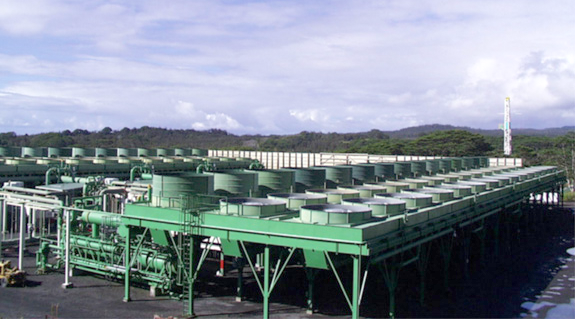
While it is difficult to predict the impact underground, up top there has been limited damage to the Puna power plant. A structure housing a well drilling rig and an electricity substation located on the 815-acre property have burned. Ormat engineers had taken the Puna geothermal wells off-line in early May 2018, well before Kilauea lava began to flow. The wells were depressurization with water or sealed with cold mud. Additionally, topside equipment was removed. Thus Ormat was ready when lava flowed over two of the well locations. The lava may be the least of the company’s worries. So far there have been hundreds of earthquakes in the Kilauea vicinity, suggesting that below the surface things are chaotic.
Some Ormat investors may have been taken by surprise by the Kilauea event. Management was not. The company has business interruption insurance that includes volcanic events and earthquake. Combined coverage is $100 million.
If the company is forced to abandon the Puna site, it is not certain what asset value will be lost. Ormat does not disclose the asset value of individual power plants. Aggregate gross asset value of all U.S. geothermal and recovered energy generation power plants was $1.7 billion at the end of December 2017.
Kilauea’s Future
It is uncertain what the volcano has in store for its neighbors in the coming weeks and months. Kilauea’s current eruption is the most long-lived in the volcano’s history. According to the U.S. Geological Survey, Kilauea has had sixty-one eruptions in the current cycle. It has been erupting on a continuous basis since 1983. It may be some time before Ormat engineers can return to Puna and determine whether the power plant can be brought back into operation.
Interestingly, the company has made no official announcements regarding the current status of the Puna Geothermal plant. Management has a full plate of worries besides hot lava. The company just closed the acquisition of U.S. Geothermal in April 2018, and must now integrate the two operations. Additionally, the company must restate its financial results for the second, third and fourth quarters of 2017, as well as the full-year 2017 financial results. Errors in the income tax provision have triggered the restatement. Shareholders will see a change in the income tax provision and net income as well as changes in deferred income tax assets and liabilities. The NYSE is also turning up the heat for Ormat’s accountants by sending the company a delisting warning for the failure to file the first quarter 2018 results. Of course, that quarter cannot be filed until the restatement is completed.
Call to Caution
Ormat is not alone in worrying about volcanic eruptions. There are eight other active volcanoes on the U.S. side of the Pacific Ocean that the U.S. Geological Survey says need monitoring. These are the mostly likely to erupt. Geothermal power plants are located in the immediate vicinity of several of them.
| U.S. Geothermal Power Plants Near Active Volcanos | ||||
| Power Plant | Capacity | Location | Volcano Neighbor | Owner |
| Mammoth Geothermal | 29 MW | California | Long Valley Region | Ormat |
| The Geysers | 1,517 MW | California | Clear Lake Volcanic Field | Calpine (CPN), NoCalif Power, Silicon Valley Power |
| Imperial Valley | 327 MW | California | Salton Buttes | CalEnergy, EnergySource |
| Fourmile Hill | 49.9 MW | California | Medicine Lake Volcano | Calpine (CPN) |
The Ring of Fire is not the only location on Earth where floating plates can be found on its crust. The Mid-Atlantic Ridge is a ‘divergent’ tectonic plate boundary. Iceland is located along this ridge and sits right above accompanying hot spot. The country is also home to thirty active volcanoes.
Iceland has is king for the geothermal power industry. There are sixteen geothermal power stations on the island with an installed capacity of 665 megawatts. Geothermal provides about 30% of the island electricity supply.
The Hellisheidi Geothermal Power Station is the second largest geothermal power plant in the world with an installed capacity of 300 megawatts. It is located in the Hengill volcano area on a tectonic plate boundary. Hengill is still active although it has not erupted in over 2,000 years.
No doubt Ormat’s current difficult situation in the hot seat of Kilauea has been a wake-up call Iceland’s National Power Company and to all operators of geothermal power plants. Likely there are now a lot of fingers crossed that their installation will not become the next geothermal power plant to be overtaken by the very earth energy they have sought to capture.
In the next post we look more closely at valuation in the geothermal sector and investor reaction to news of the Kilauea volcano.
Neither the author of the Small Cap Strategist web log, Crystal Equity Research nor its affiliates have a beneficial interest in the companies mentioned herein.

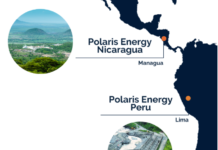
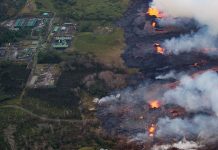
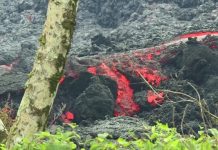
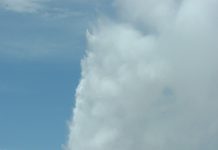


Why is there no mention of geothermal reinjection wells causing earthquakes all over the world? How can you possibly think that fracturing rock in a rift zone over lava can not erode the rift after 20 + years??? Come on, stop thinking about profits all the time, there is even evidence that last 6.7 and 7.1 earthquakes in california were caused by the geothermal plant at COSO…